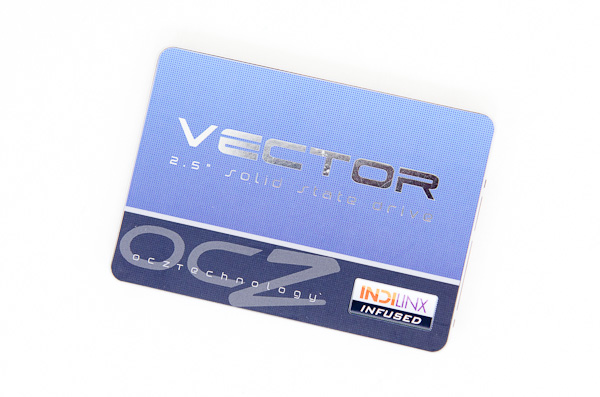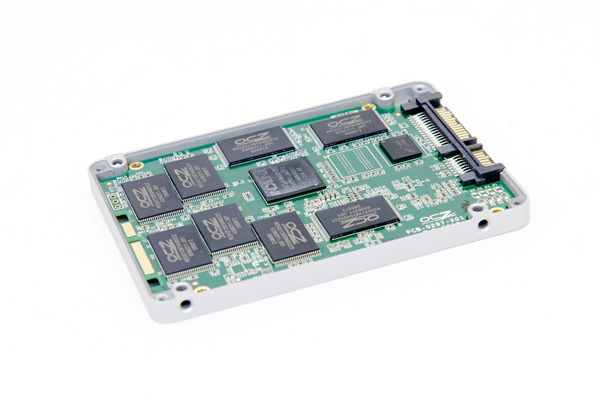OCZ Vector (256GB) Review
by Anand Lal Shimpi on November 27, 2012 9:10 PM ESTFinal Words
With the Vector, OCZ has built a price and performance competitor to Samsung's SSD 840 Pro, which previously remained peerless at the top of our charts. For a company that just weeks ago was considered down and out for the count, this is beyond impressive. Samsung has emerged as one of the strongest players in the consumer SSD space, and OCZ appears ready to challenge it. In our tests, Samsung typically enjoys better peak performance, but OCZ's Vector appears to have the advantage when it comes to worst case performance and IO consistency. The latter tend to be more valuable in improving overall user experience in my opinion. I would still like to see an S3700-class client drive and I'd be willing to give up top-end performance to get there, but I suspect that's a tall order for now.
The Vector's power consumption under load, given the performance it's able to deliver, is excellent. I wish idle power consumption were better, making the 830/840 Pro a better fit for ultra mobile applications. But under load the Vector and 840 Pro are indistinguishable from one another.
The only downside to the Vector really is its price, which like the 840 Pro is at a definite premium vs competition from the previous generation. As with all SSDs however, I fully expect Barefoot 3 and maybe even the Vector itself to fall in price over time. If you want the latest and greatest available today, Samsung's 840 Pro now has competition in OCZ's Vector.
The Barefoot 3 controller is quite promising. It certainly seems very capable from a performance standpoint without blowing through its power budget. It's no small feat if OCZ's best in-house silicon can be spoken of in the same sentence as Samsung's. The PLX and Indilinx acquisitions appear to have paid off. I'm curious to see how OCZ's improved validation and reliability testing fare in the long run. This isn't the first time that OCZ has promised to focus more on validation, but with Vector I do get the feeling that things are different. I didn't run into any compatibility issues or reliability problems with the Vector in my testing, but as always the proof is what happens when these drives make their way into the hands of end users.
Overall I'm impressed by the Vector. It's a huge improvement over the already good Vertex 4, and manages to compete in a different league by fixing some lingering performance issues with its predecessor. I had resigned myself to assuming no one would come close to Samsung on the high-end, but it's good to be proven wrong. Should OCZ be able to deliver Samsung-like performance and reliability, then I'll really be impressed.












151 Comments
View All Comments
melgross - Wednesday, November 28, 2012 - link
What does that mean; usable space? Every OS leaves a different amount after formatting, so whether the drive is rated by GB or GiB, the end result would be different. Normally, SSD's are rated as to the around seen by the OS, not by that plus the around overrated. So it isn't really a problem.Actually, the differences we're talking about isn't all that much, and is more a geeky thing to concern oneself with more than anything else. Drives are big enough, even SSD's, so that a few GB's more or less isn't such a big deal.
Kristian Vättö - Wednesday, November 28, 2012 - link
An SSD can't operate without any over-provisioning. If you filled the whole drive, you would end up in a situation where the controller couldn't do garbage collection or any other internal tasks because every block would be full.Drive manufacturers are not the issue here, Microsoft is (in my opinion). They are using GB while they should be using GiB, which causes this whole confusion. Or just make GB what it really is, a billion bytes.
Holly - Thursday, November 29, 2012 - link
Sorry to say so, but I am afraid you look on this from wrong perspective. Unless you are IT specialist you go buy a drive that says 256GB and expect it to have 256GB capacity. You don't care how much additional space is there for replacement of bad blocks or how much is there for internal drive usage... so you will get pretty annoyed by fact that your 256GB drive would have let's say 180GB of usable capacity.And now this GB vs GiB nonsense. From one point of view it's obvious that k,M,G,T prefixes are by default *10^3,10^6,10^9,10^12... But in computers capacity units they used to be based on 2^10, 2^20 etc. to allow some reasonable recalculation between capacity, sectors and clusters of the drive. No matter what way you prefer, the fact is that Windows as well as many IDE/SATA/SAS/SCSI controllers count GB equal to 2^30 Bytes.
Random controllers screenshots from the internet:
http://www.cisco.com/en/US/i/100001-200000/190001-...
http://www.cdrinfo.com/Sections/Reviews/Specific.a...
http://i.imgur.com/XzVTg.jpg
Also, if you say Windows measurement is wrong, why is RAM capacity shown in 'GB' but your 16GB shown in EVERY BIOS in the world is in fact 16384MiB?
Tbh there is big mess in these units and pointing out one thing to be the blame is very hasty decision.
Also, up to some point the HDD drive capacity used to be in 2^k prefixes long time ago as well... still got old 40MB Seagate that is actually 40MiB and 205MB WD that is actually 205MiB. CD-Rs claiming 650/700MB are in fact 650/700MiB usable capacity. But then something changed and your 4.7GB DVD-R is in fact 4.37GiB usable capacity. And same with hard discs...
Try to explain angry customers in your computer shop that the 1TB drive you sold them is 931GB unformatted shown both by controller and Windows.
Imho nobody would care slightest bit that k,M,G in computers are base 2 as long as some marketing twat didn't figure out that his drive could be a bit "bigger" than competition by sneaking in different meaning for the prefixes.
jwilliams4200 - Thursday, November 29, 2012 - link
It is absurd to claim that "some marketing twat didn't figure out that his drive could be a bit "bigger" than competition by sneaking in different meaning for the prefixes".The S.I. system of units prefixes for K, M, G, etc. has been in use since before computers were invented. They have always been powers of 10. In fact, those same prefixes were used as powers of ten for about 200 years, starting with the introduction of the metric system.
So those "marketing twats" you refer to are actually using the correct meaning of the units, with a 200 year historical precedent behind them.
It is the johnny-come-latelys that began misusing the K, M, G, ... unit prefixes.
Fortunately, careful people have come up with a solution for the people incorrectly using the metric prefixes -- it is the Ki, Mi, Gi prefixes.
Unfortunately, Microsoft persists in misusing the metric prefixes, rather than correctly using the Ki, Mi, Gi prefixes. That is clearly a bug in Microsoft Windows. Kristian is absolutely correct about that.
Holly - Friday, November 30, 2012 - link
How much RAM does your bios report you have?Was the BIOS of your motherboard made by Microsoft?
jwilliams4200 - Friday, November 30, 2012 - link
Would you make that argument in front of a judge?"But judge, lots of other guys stole cars also, it is not just me, so surely you can let me off the hook on these grand-theft-auto charges!"
Touche - Saturday, December 1, 2012 - link
No, he is right. Everything was fine until HDD guys decided they could start screwing customers for bigger profits. Microsoft and everyone else uses GB as they should with computers. It was HDD manufacturers that caused this whole GB/GiB confusion regarding capacity.jwilliams4200 - Saturday, December 1, 2012 - link
I see that you are a person who never lets the facts get in the way of a conspiracy theory.Touche - Monday, December 3, 2012 - link
http://betanews.com/2006/06/28/western-digital-set...Holly - Monday, December 3, 2012 - link
Well, 2^10k prefixes marked with 'i' were made in a IEC in 1998, in IEEE in 2005, alas the history is showing up frequent usage of both 10^3k and 2^10k meanings. Even with IEEE passed in 2005 it took another 4 years for Apple (who were the first with OS running with 2^10k) to turn to 'i' units and year later for Ubuntu with 10.10 version.For me it will always make more sense to use 2^10k since I can easily tell size in kiB, MiB, GiB etc. just by bitmasking (size & 11111111110000000000[2]) >> 10 (for kiB). And I am way too used to k,M,G with byte being counted for 2^10k.
Some good history reading about Byte prefixes can be found at http://en.wikipedia.org/wiki/Timeline_of_binary_pr... ...
Ofc, trying to reason with people who read several paragraph post and start jumping around for one sentence they feel offended with is useless.
But honestly even if kB was counted for 3^7 bytes it wouldn't matter... as long as everyone uses the same transform ratio.